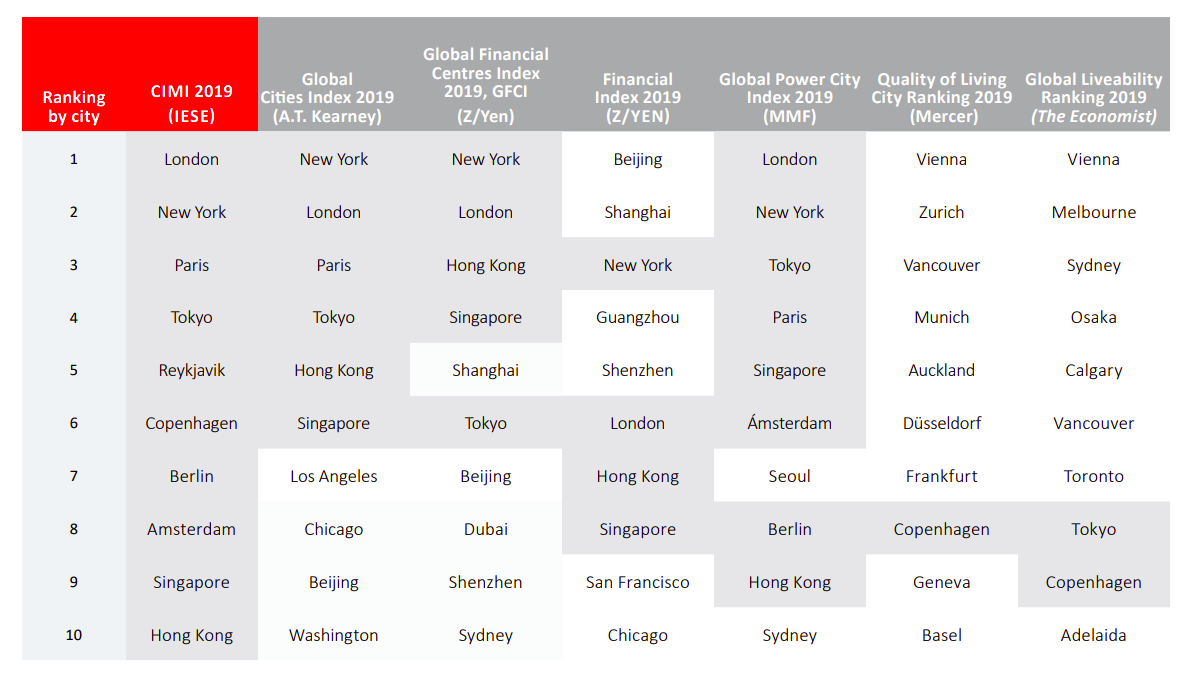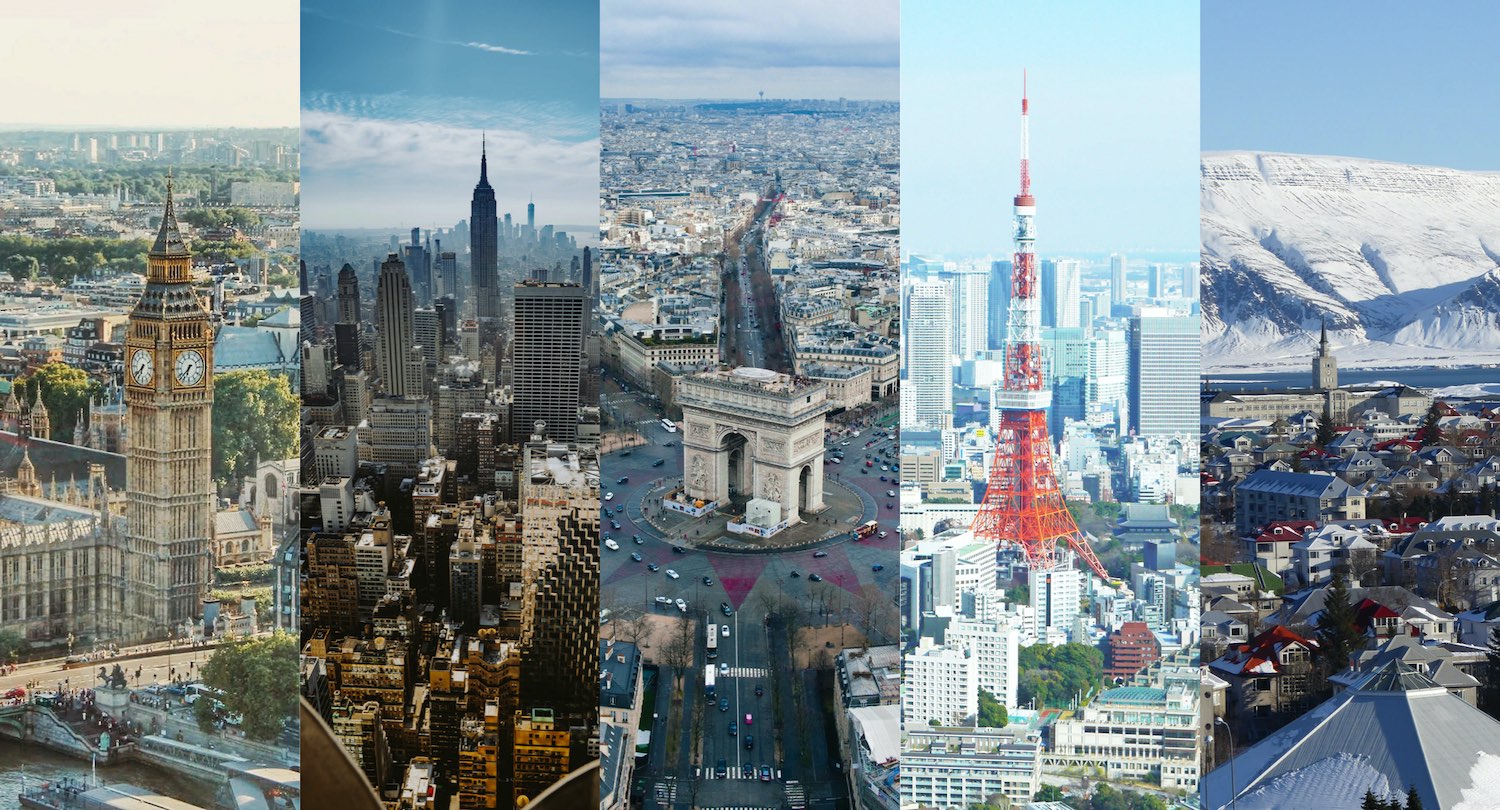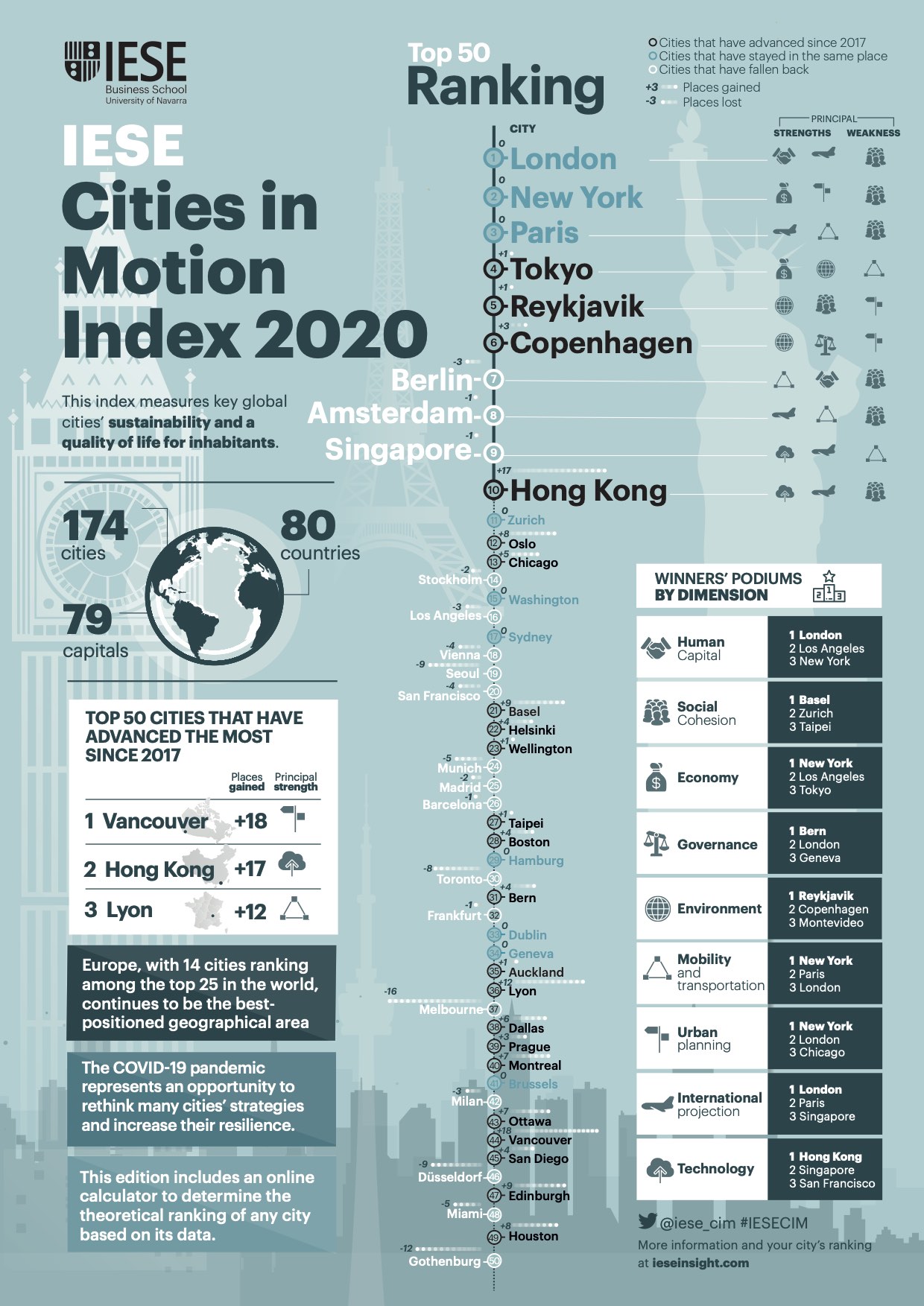Here are the world’s smartest cities, according to a research published by IESE Business School in Barcelona.
Now in its seventh edition, the research ranks the smartest cities based on their IESE Cities in Motion Index (CIMI) scores.
Highlights

London, New York, and Paris take the top three spots once more in the smartest cities list, positions which they have kept for several years now.
These three cities are standouts in differing domains. London is the leader when it comes to human capital and international projection, gaining first place in both dimensions.
New York took the top spot in three dimensions: economy, urban planning and transportation.
Meanwhile, while Paris did not take any first-place position for any CIMI dimension, it is excellent in both international projection (position 2) and transportation (position 2).
Bern in Switzerland is notable for gaining the top position in the social cohesion and governance dimensions of the Index. Iceland, on the other hand, is the leader in the environment dimension. Lastly, Hong Kong dominates the technology dimension.
Vancouver is the most improved city within the Top 50, moving 18 spots up to 44th place. Lyon also jumped by 12 spots due to its boosted international projection and human capital development.
Germany’s Stuttgart fell out of the Top 50, giving up 23 spots down to 63rd place.
In the context of the COVID-19 pandemic, the authors noted the importance of private-public collaboration and focusing on urban resilience to ensure that the cities can successfully overcome this crisis.
“The current health crisis serves as a reminder that cities have a duty to people and, therefore, to human development. This crisis will change people’s real needs; consequently, cities will have to change their urban policies and strategies,” said IESE professor Joan Enric Ricart, who along with Prof. Pascual Berrone led the team responsible for the study.
How can we measure how ‘smart’ a city is?
For this year’s rankings, 174 cities across 80 countries were included in the scope of the study.

To measure how ‘smart’ a city is, IESE considered 101 indicators. All of these indicators fall into one of these nine dimensions, all of these contribute to the final CIMI score:

According to the authors, what sets the CIMI apart from other ‘urban’ indicators that are currently existent is that the construction of the CIMI ensures that cities will be properly comparable.
Completeness, sustainability, and objectivity are also other attributes that were considered in the design of the Index — qualities other city indicators fall short of in one way or another because of limited coverage, lack of standardisation, or bias due to dependence on political will.
For further comparison, here are some of the city rankings from other institutions compared with the CIMI rankings.

The CIMI is designed to be both a diagnostic tool and also an initial step in developing strategies to improve a city’s performance across the key dimensions included in the metric.
This year, IESE has gone interactive with their Cities In Motion map and online calculator. Here, you can further interact with the rankings and even compute theoretical city rankings based on available data.
If you are interested in knowing more about how the study was conducted and other insights resulting from it, you can also read the full report (PDF).











